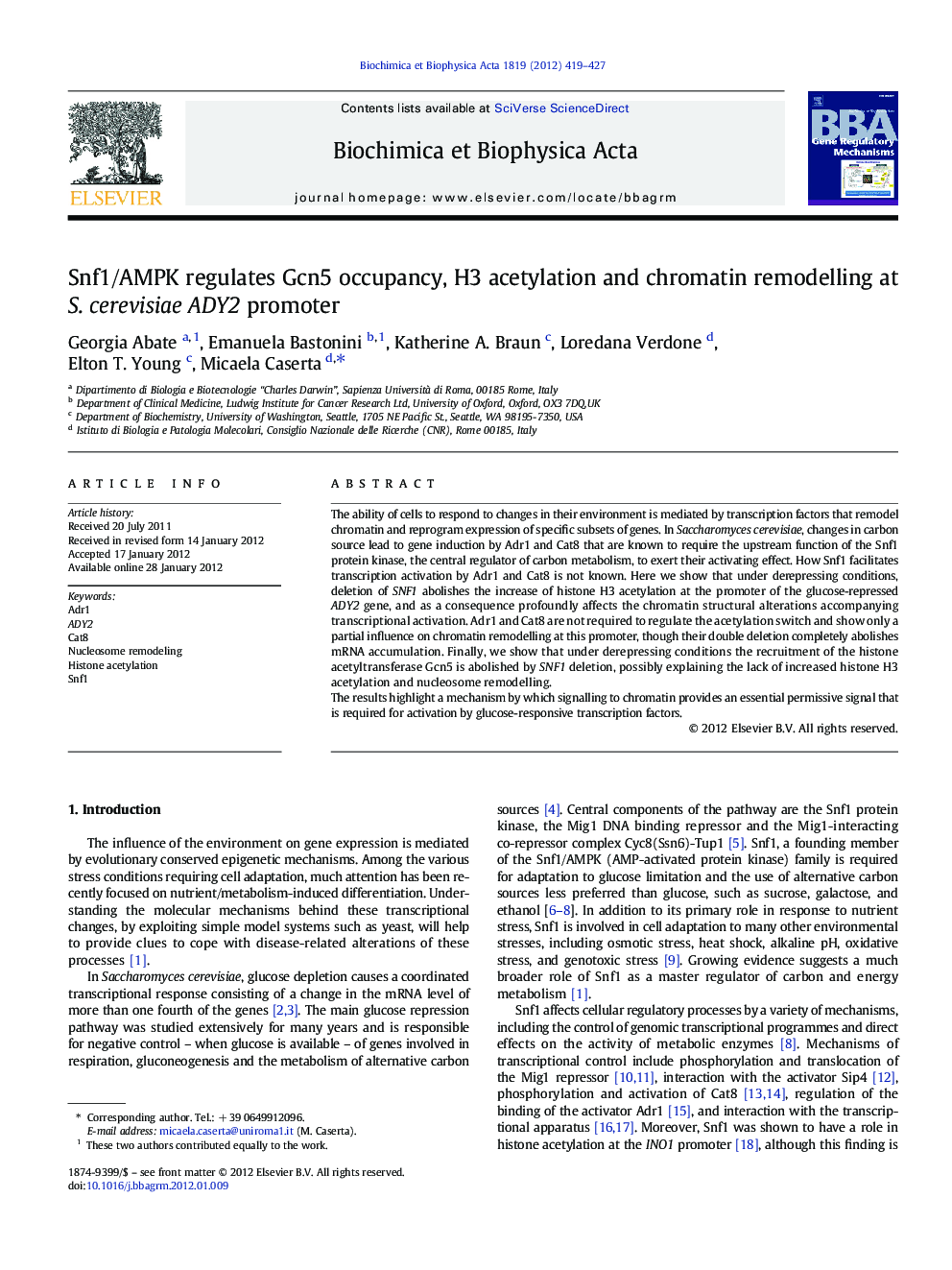| Article ID | Journal | Published Year | Pages | File Type |
|---|---|---|---|---|
| 1946560 | Biochimica et Biophysica Acta (BBA) - Gene Regulatory Mechanisms | 2012 | 9 Pages |
The ability of cells to respond to changes in their environment is mediated by transcription factors that remodel chromatin and reprogram expression of specific subsets of genes. In Saccharomyces cerevisiae, changes in carbon source lead to gene induction by Adr1 and Cat8 that are known to require the upstream function of the Snf1 protein kinase, the central regulator of carbon metabolism, to exert their activating effect. How Snf1 facilitates transcription activation by Adr1 and Cat8 is not known. Here we show that under derepressing conditions, deletion of SNF1 abolishes the increase of histone H3 acetylation at the promoter of the glucose-repressed ADY2 gene, and as a consequence profoundly affects the chromatin structural alterations accompanying transcriptional activation. Adr1 and Cat8 are not required to regulate the acetylation switch and show only a partial influence on chromatin remodelling at this promoter, though their double deletion completely abolishes mRNA accumulation. Finally, we show that under derepressing conditions the recruitment of the histone acetyltransferase Gcn5 is abolished by SNF1 deletion, possibly explaining the lack of increased histone H3 acetylation and nucleosome remodelling.The results highlight a mechanism by which signalling to chromatin provides an essential permissive signal that is required for activation by glucose-responsive transcription factors.
► The main role of Snf1 is to control chromatin structure and function. ► The specific promoter architecture of each gene is a key element in determining the mechanism of transcription activation. ► Cell metabolism is controlled by epigenetic mechanisms.
